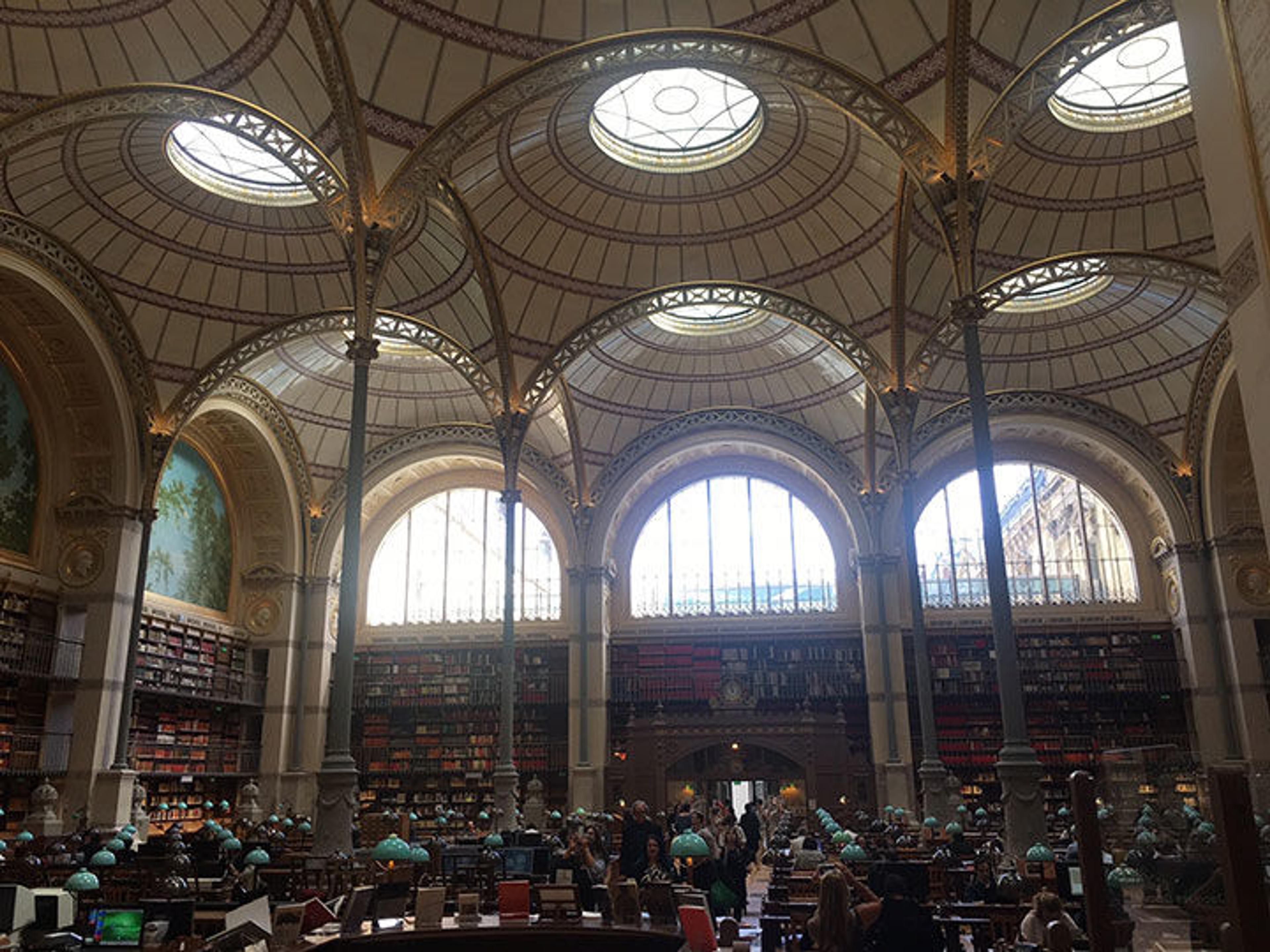
Labrouste reading room hosts collections and readers from both the Institut national d'histoire de l'art [INHA] and Bibliothèque nationale de France [BnF] Prints and Photographs department. All photos by the author
«This June, I participated in the 2017 Art Libraries Society of North America's program to visit art libraries in Paris. Of the 20 participants, 18 were from libraries across the United States, one was from Canada, and one from Hungary.»
I arrived early on Sunday, June 11, and spent the afternoon at the Louvre.
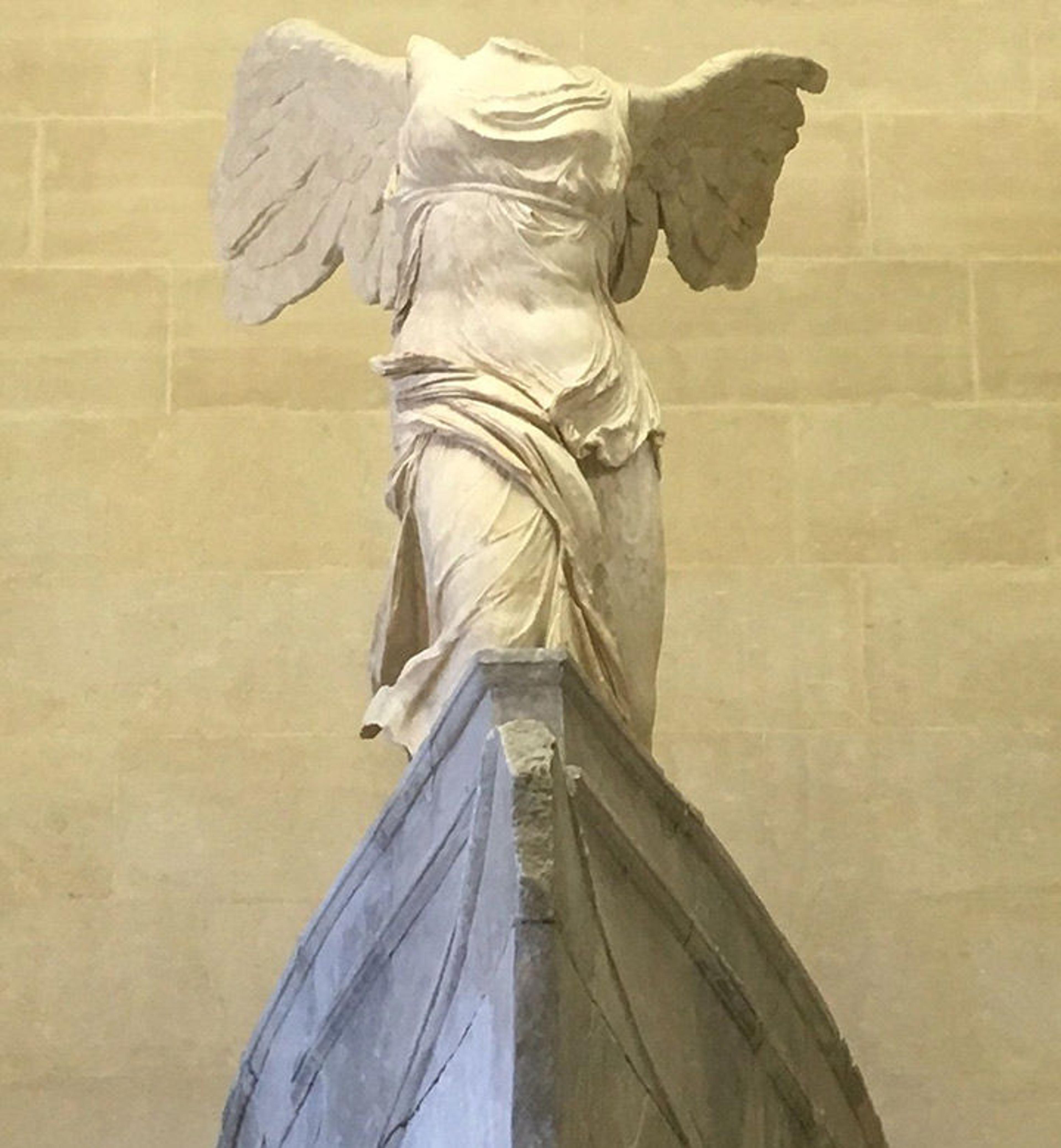
The Winged Victory of Samothrace, ca. 220–185 BC. Parian marble for the statue and gray Rhodian marble for the boat and base, H. 219 in. (557 cm). Paris, Musée du Louvre, MA 2369
In 1982, the Ministry of Higher Education created a new concept of research libraries: consolidating smaller libraries into larger ones and providing a subvention to pay for resources, facilities, and staff. On Monday, June 12, the group started off the study trip with a visit to the Institut national d'histoire de l'art [INHA] library, founded in 1908 as a library of art and archaeology. At present, the INHA has two million manuscripts (1.3 million documents and 700,000 books) focused on the history of art in all periods and languages.
All books from the Louvre are in this library, requiring curators to visit when conducting research. As of December 2016, visitors to this library no longer need to make an appointment to use the reading rooms or access the collections.
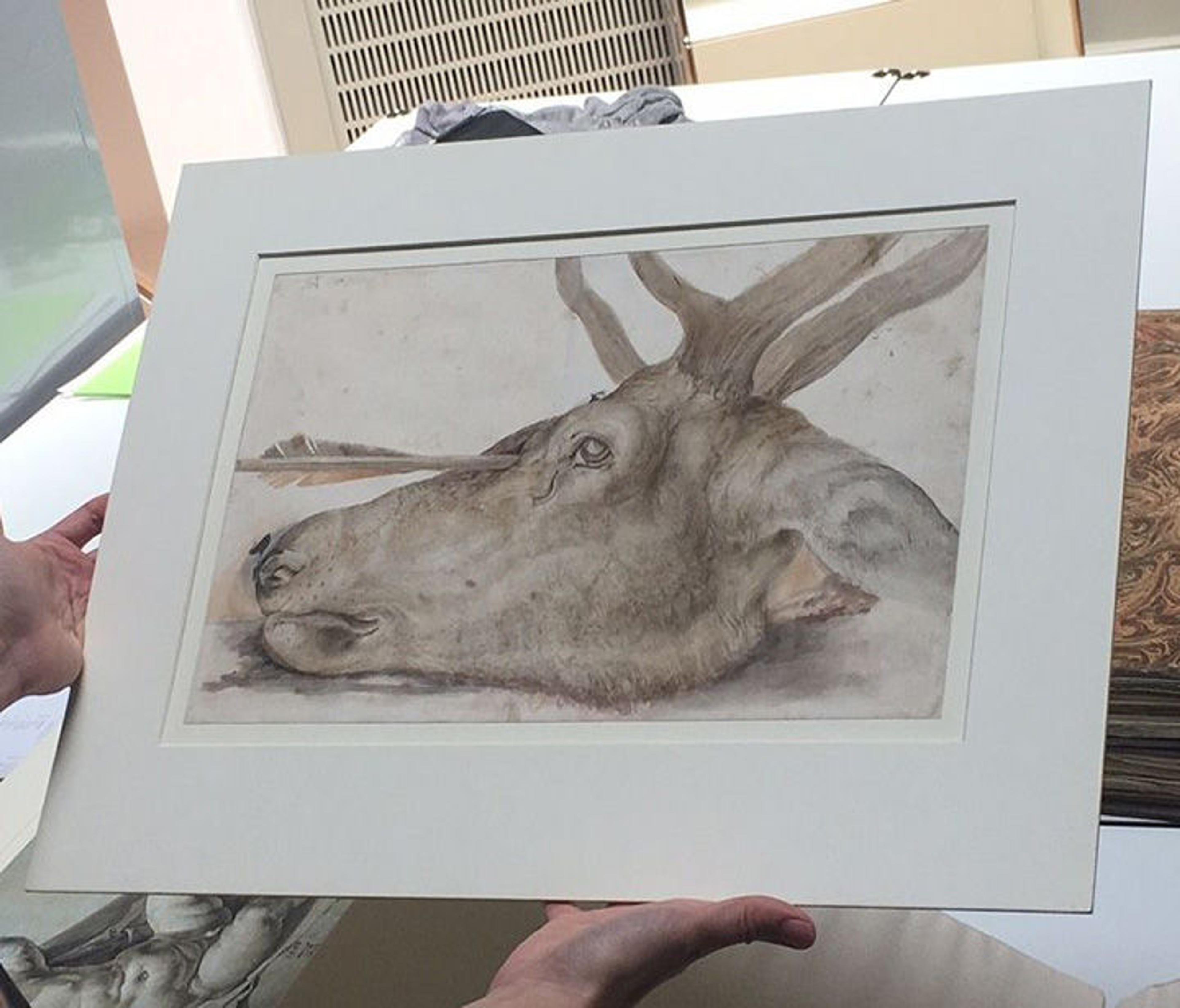
Albrecht Dürer (German, 1471–1528). Deer Head Pierced by an Arrow, 1504. Brush drawing and watercolor on paper. BNF/Bibliothèque Nationale de France, Paris, Départment des Estampes et de la Photographie
The print and photography departments at BnF are the legal deposit sites for all French pictures: there are 15 million pictures in the collection, including rare materials, six million prints, four million photographs, 200,000 drawings, and 200,000 posters. The legal deposits started in the 16th century for books, the 17th century for prints, and in 1925 for photographs.
In the afternoon, the group visited the German Center for Art History/Deutsches Forum für Kunstgeschichte/Centre Allemand d'Historie de l'art, a part of the Max Leiber Institute. It focuses on French art history and German-French relations, or "French art in a transnational context."
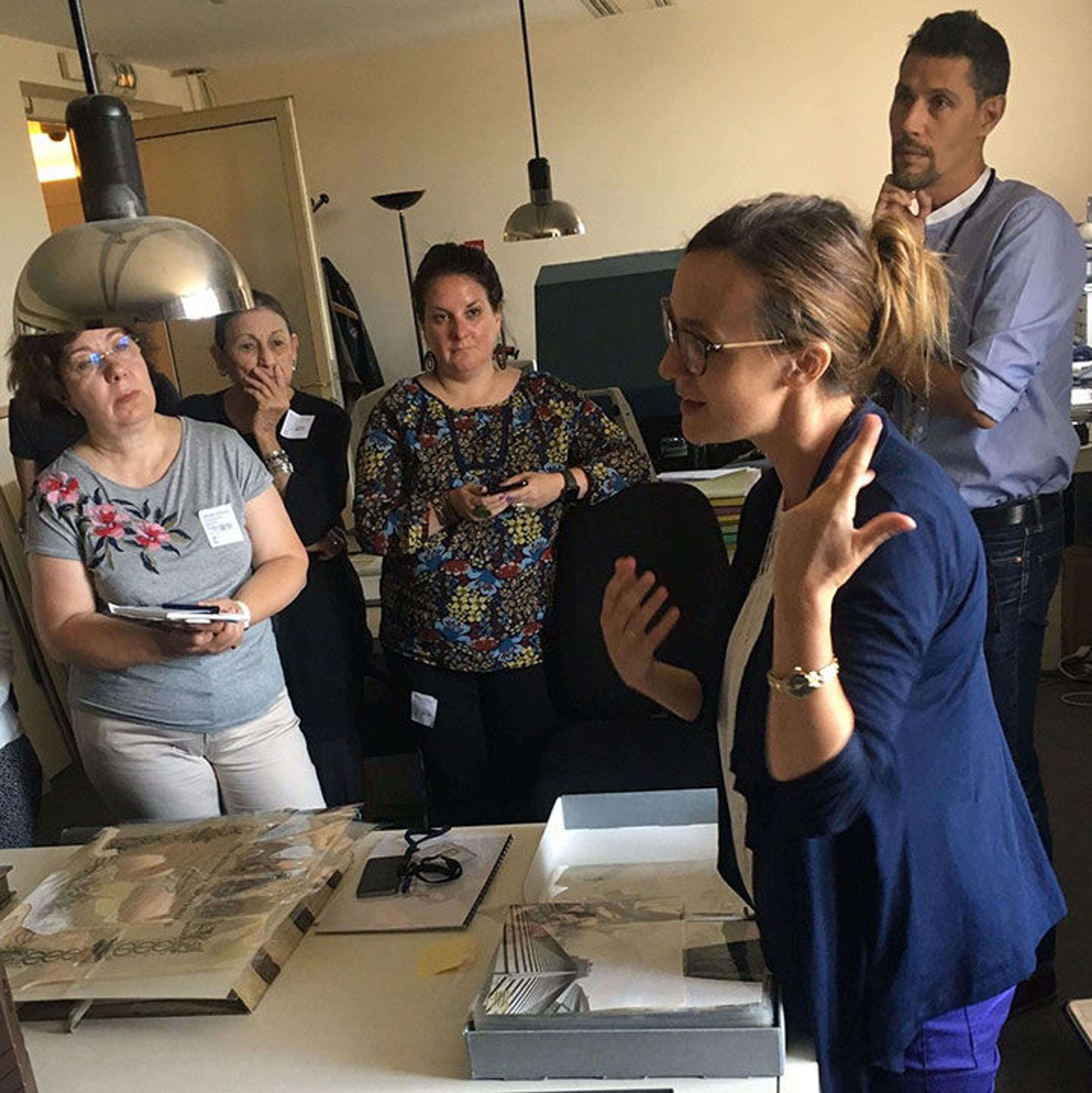
A discussion in the Musée d'Orsay archives
The next day started off with a visit to the Bibliothèque et de la Documentation de la conservation du Musée d'Orsay. In 1986, the Musée d'Orsay opened to the public. Today, the d'Orsay library holdings include 40,000 monographs and periodicals specializing in collections not held at the Louvre: photography, architecture, and decorative arts.
In 2020, a new research center will open across the street in a large townhouse. It will include the library, archives, conservation, curatorial offices, rights and permissions office, and publishing and exhibition staffs. Library spaces will include spaces for relaxation, individual and group study, teaching, and a new auditorium. Visual exhibition spaces will also be added.
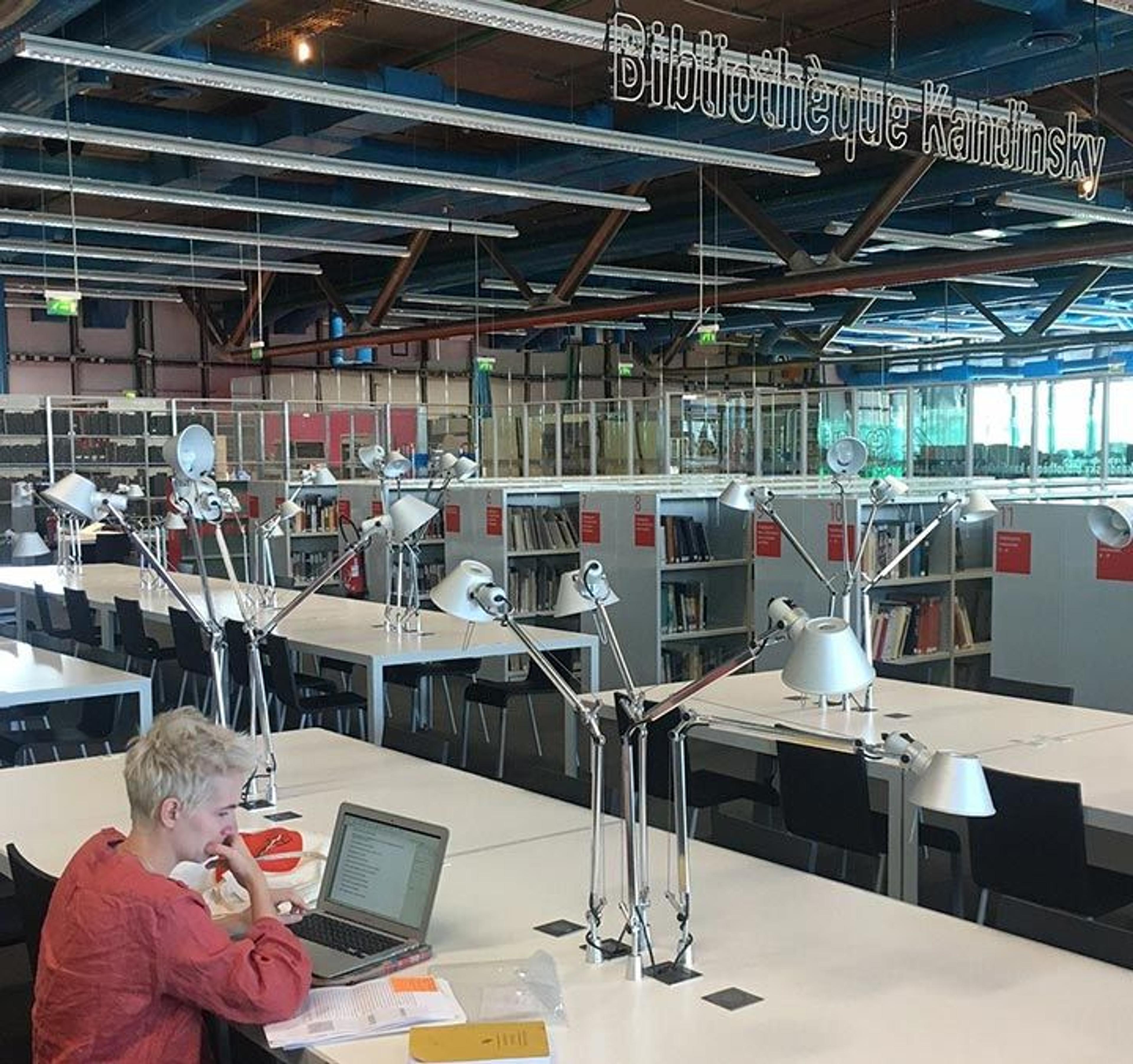
Bibliothèque Kandinsky reading room at the Centre Georges Pompidou
After lunch at the Musée d'Orsay, the group visited the special collections in the Bibliothèque Kandinsky at the Centre Georges Pompidou. The Kandinsky library holdings include artist files, archives, research material and books, artists' books, and ephemera. While they do acquire materials more-generally related to the study of modern and contemporary art, they focus on areas not covered by INHA.
Library staff are encouraged to curate small exhibitions of library materials within the larger exhibition galleries. The library collections include 7,000 artists' books, 13,000 artist files, and 7,000 periodicals.
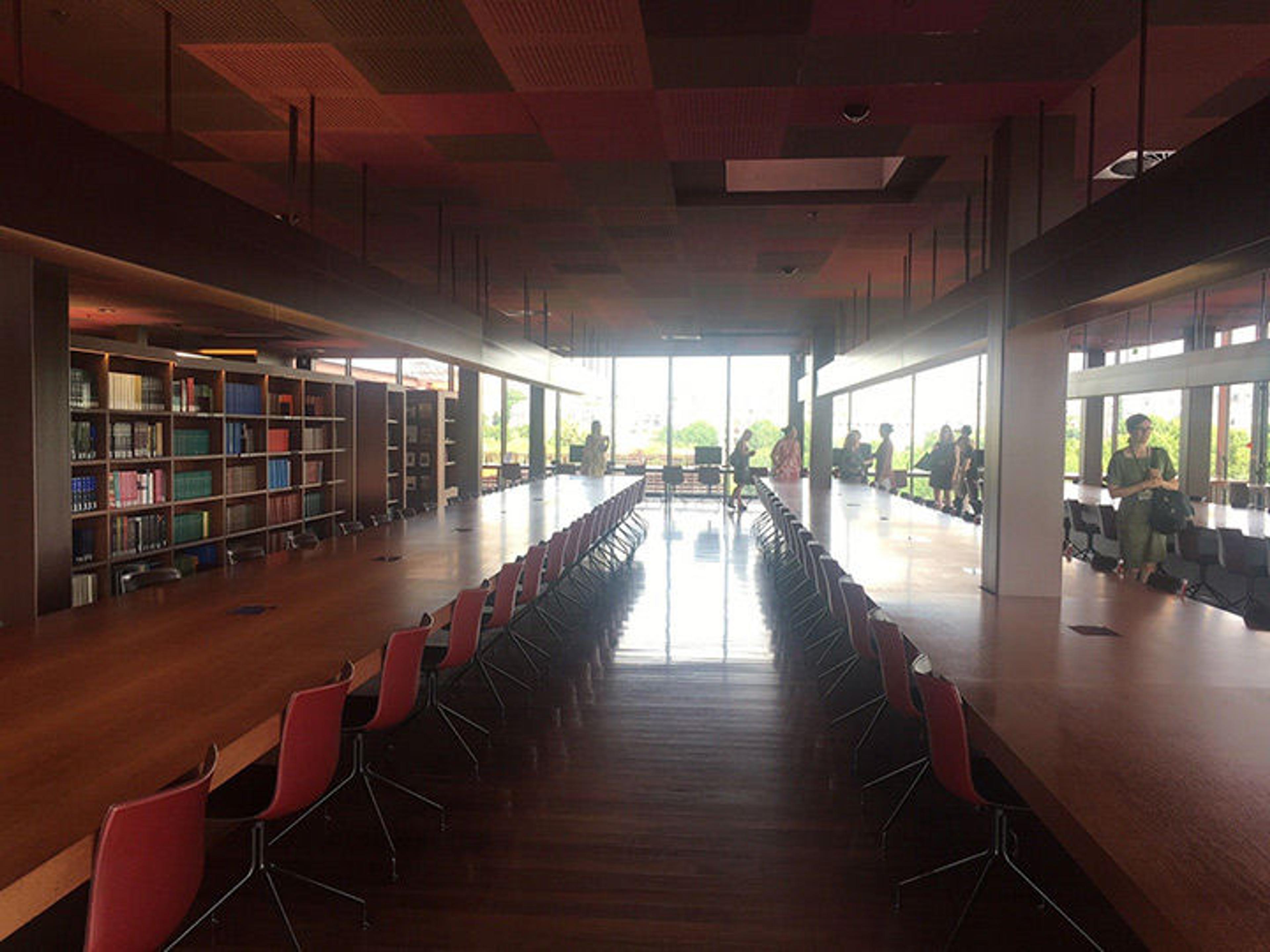
Quai Branly library reading room, atop the Musée du Quai Branly
The following morning, the group visited the Médiathèque et du musée du Quai Branly-Jacques Chrirac. Founded in 2007 as a research library and museum for non-Western, non-European art, the library has four reading rooms and a staff of 34.
The library also has a vast sound and image collection, including musical instruments and field recordings. Only five percent of library researchers are from the United States.
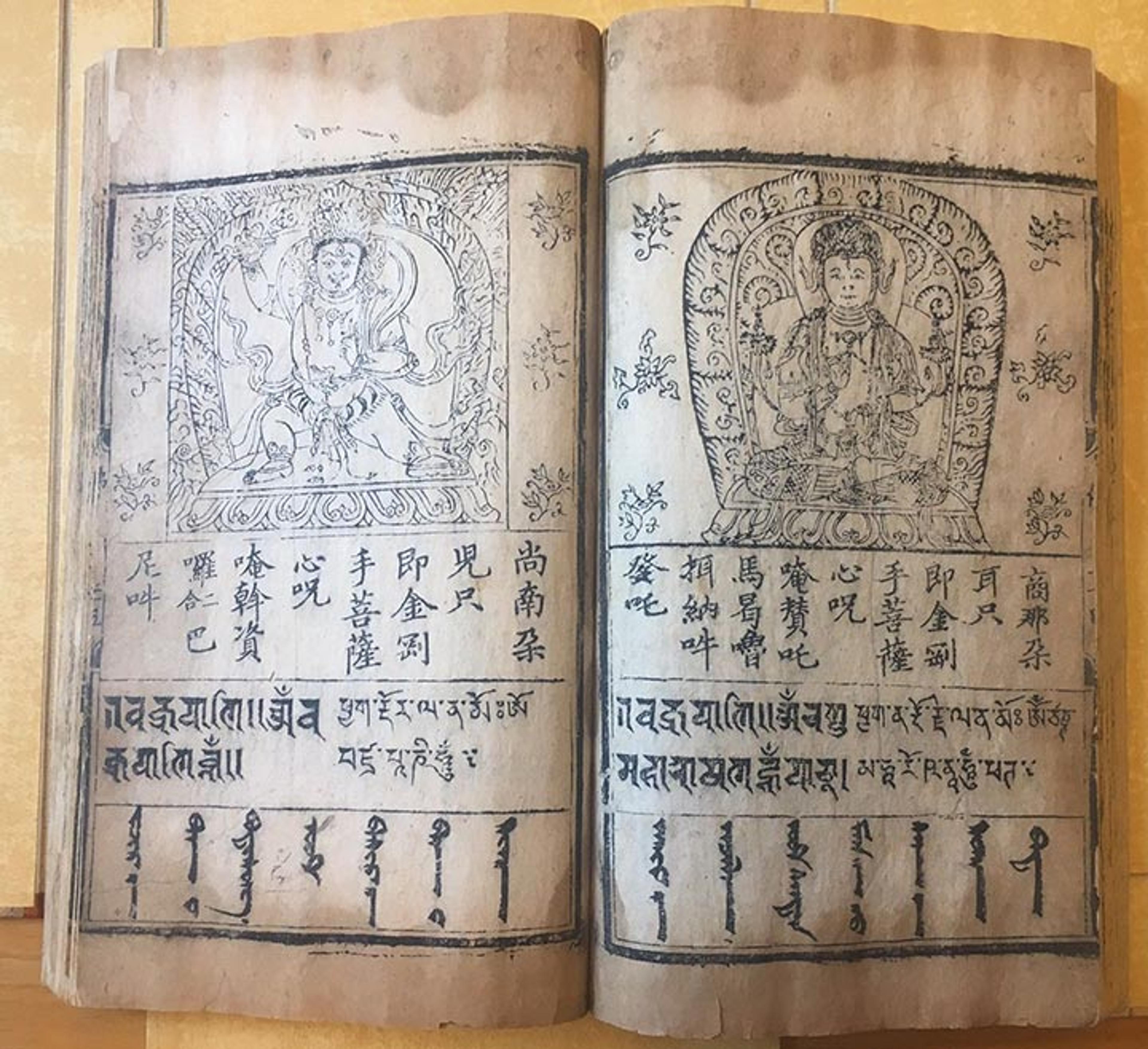
A 14th-century four-language dictionary for Nepali, Tibetan, Chinese, and Mongol languages
In the afternoon, the group visited the Bibliothèque du Musée Guimet et visite du musée. The Guimet Library was founded in 1880 by Emile Etienne Guimet as a museum of religion. After his death, the museum became the first Asian art museum in France; all of the non-Asian art from this museum was transferred to the Louvre. The library includes a reference collection and special collections.
There are two librarians who work here, conducting cataloging and ordering, along with assistants. They primarily purchase books in Chinese, Japanese, Korean, and languages from South and Southeast Asia.
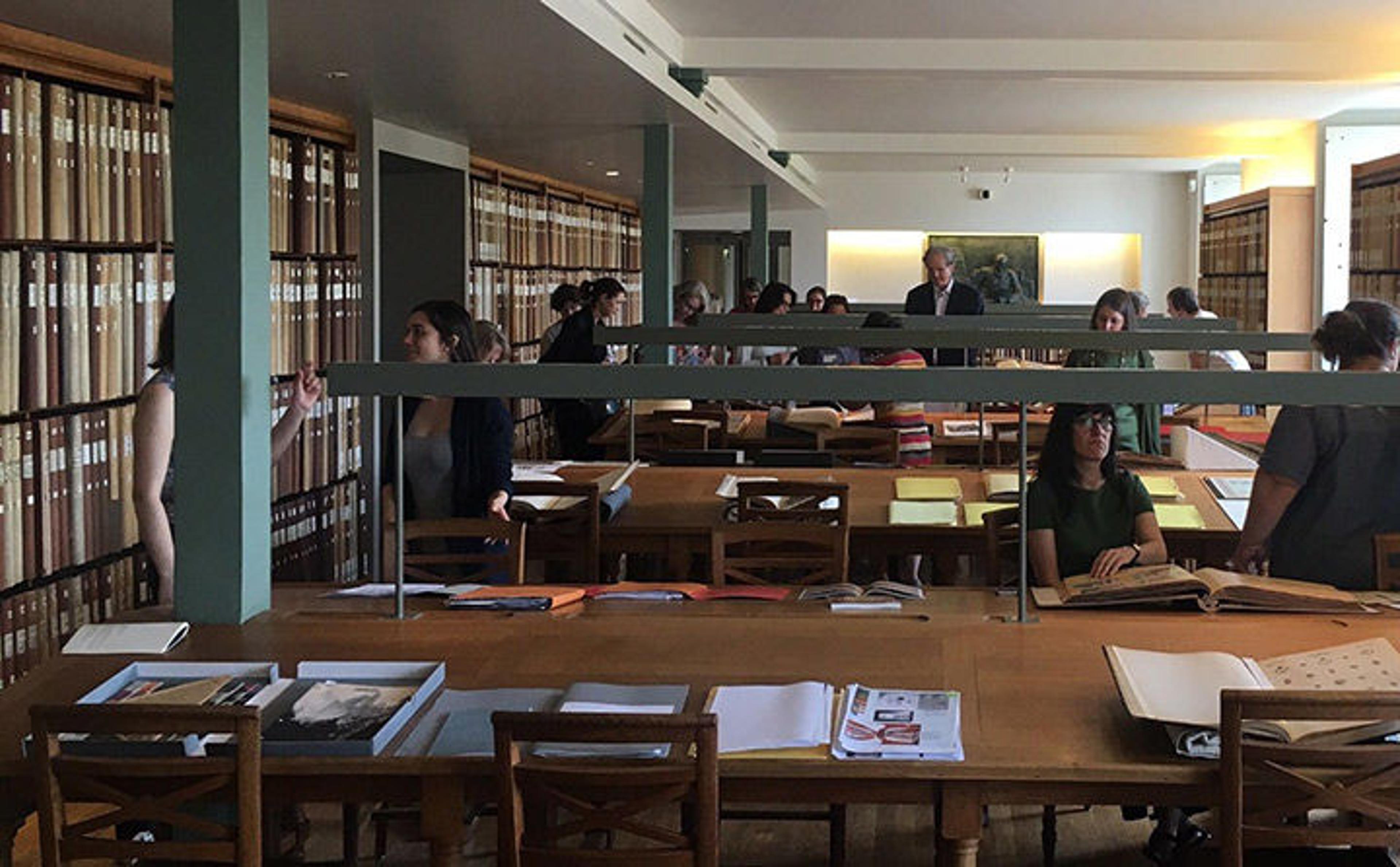
Bibliothèque du musée des Arts décoratifs reading room
The next day, the group visited the Bibliothèque du musée des Arts décoratifs. Holdings include monographs, journals, archives, and digital collections. The library collections focus on architectural treatises, archives of designers, and iconographic collections.
Lining the walls of the reading room is a collection of 5,000 scrap books with over one million images total, arranged alphabetically by subject.
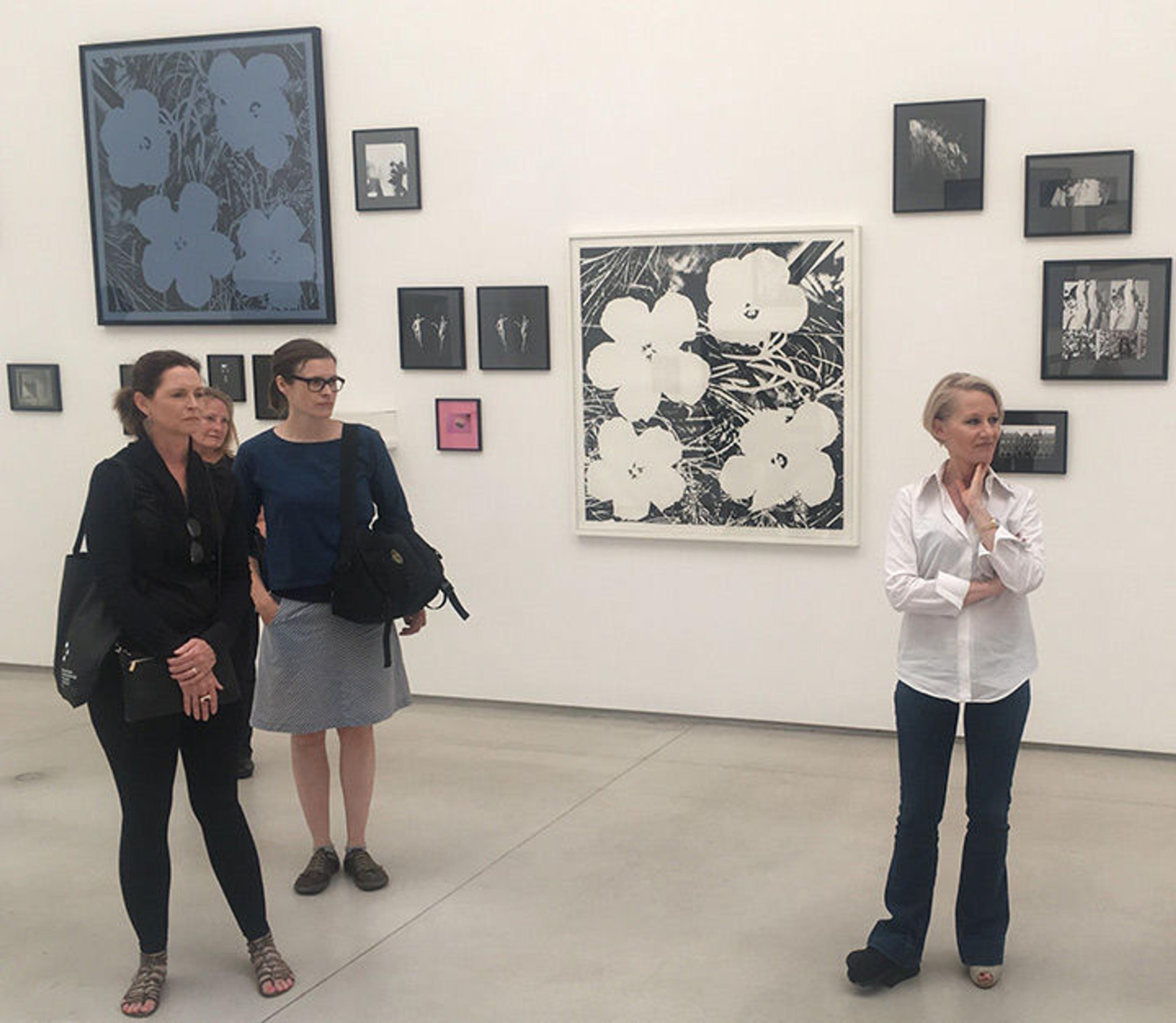
Group tour of the first floor of Galerie Ropac
In the afternoon, the group visited the Galerie Ropac. A well-established gallery representing well known artists, they have an active publishing program.
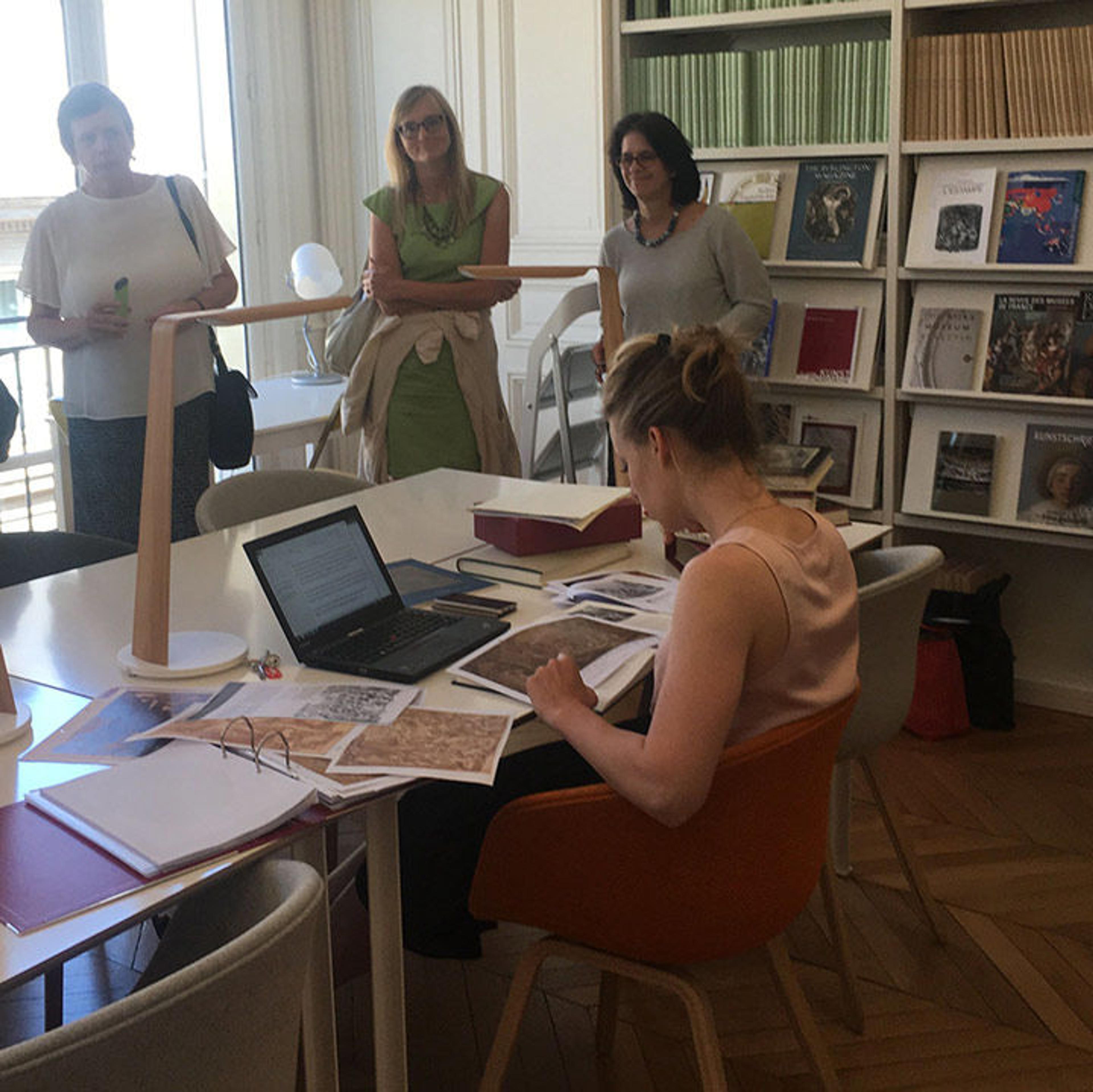
Terra Foundation reading room with seating for eight researchers
In the late afternoon, the group visited the Terra Foundation et de la Bibliothèque d'histoire de l'art de la Fondation Custodia, and the visit was hosted by Ewa Bobrowska and Wilfred de Bruijn.
The mission of the Terra Foundation is to promote American art in an international context. The library has 11,000 books focusing on American art from the 19th century to 1980. They do not collect periodicals but do provide ILL (Interlibrary Loan) services with the Archives of American Art.
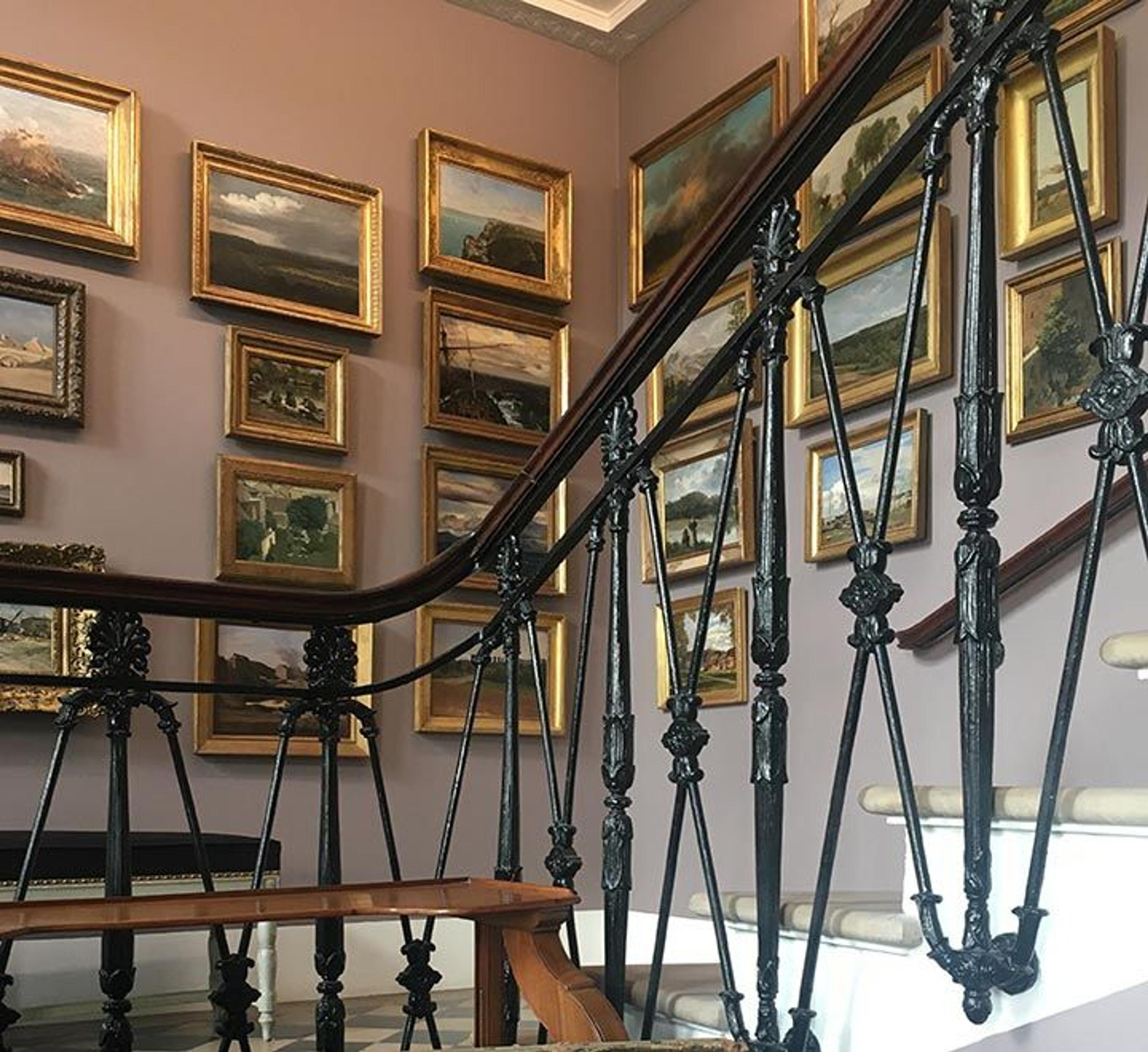
Entry to the Hôtel Turgot that houses the collection of the Foundation Custodia
The group was also given a tour of the Foundation Custodia, housed in an 18th-century mansion behind the Terra Foundation building.
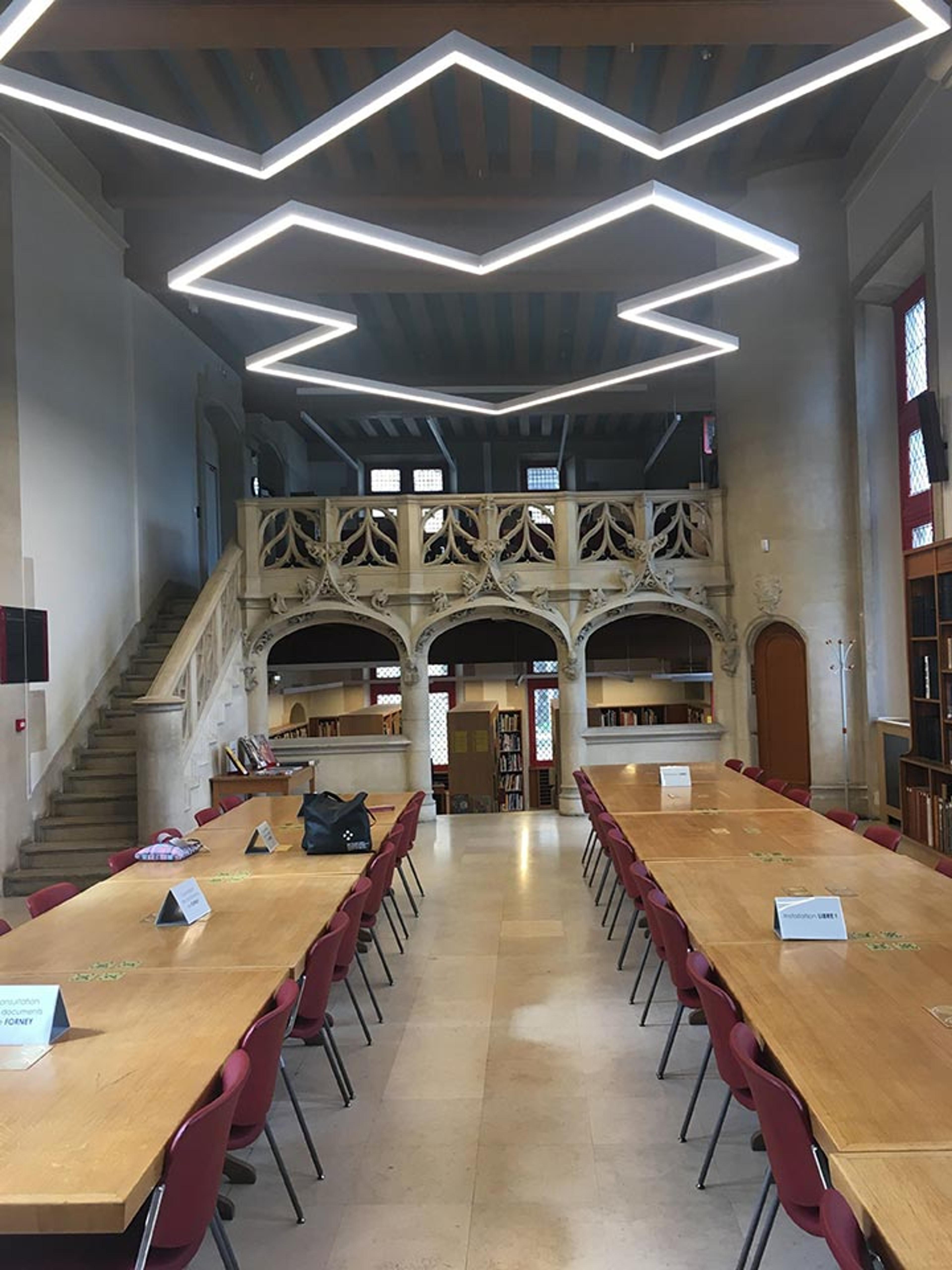
Forney Library's public reading room
The following day, the group visited the Bibliothèque Forney. The Forney Library is in a petite mansion near the Seine and is a City of Paris Library with both circulating and special collections. The circulating collections—20,000 books and periodicals—focus broadly on fashion, textiles, crafts, fine arts, design, and architecture.
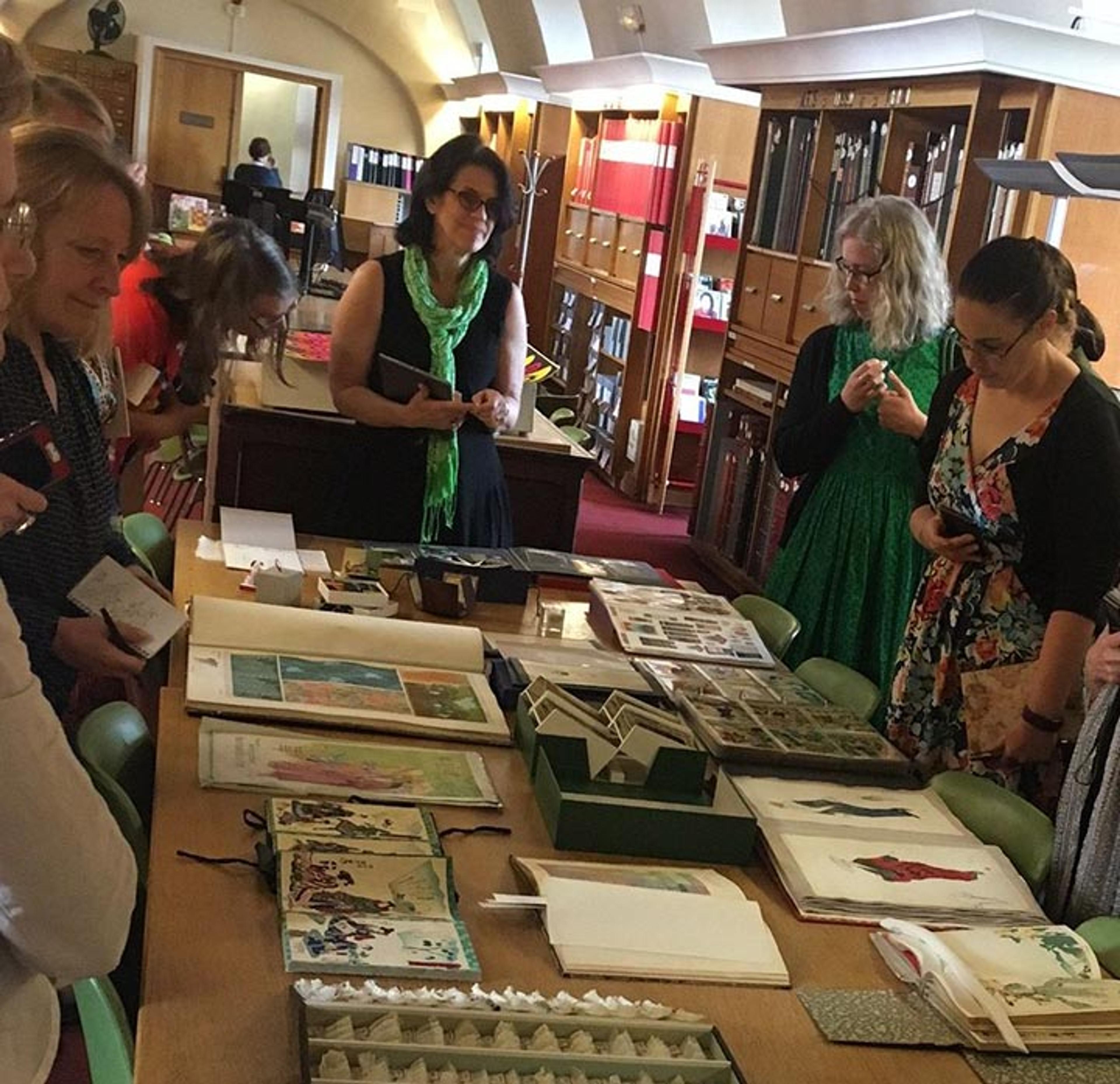
The group viewing trade catalogs and sample books in the special collections reading room
The special collections include 350,000 volumes and over one million items in the archival collections. They have 50 staff and 12 curators (librarians). Library use is restricted to anyone aged 18 and over, with an exception for anyone 16 and over who is in a crafts or trades program.
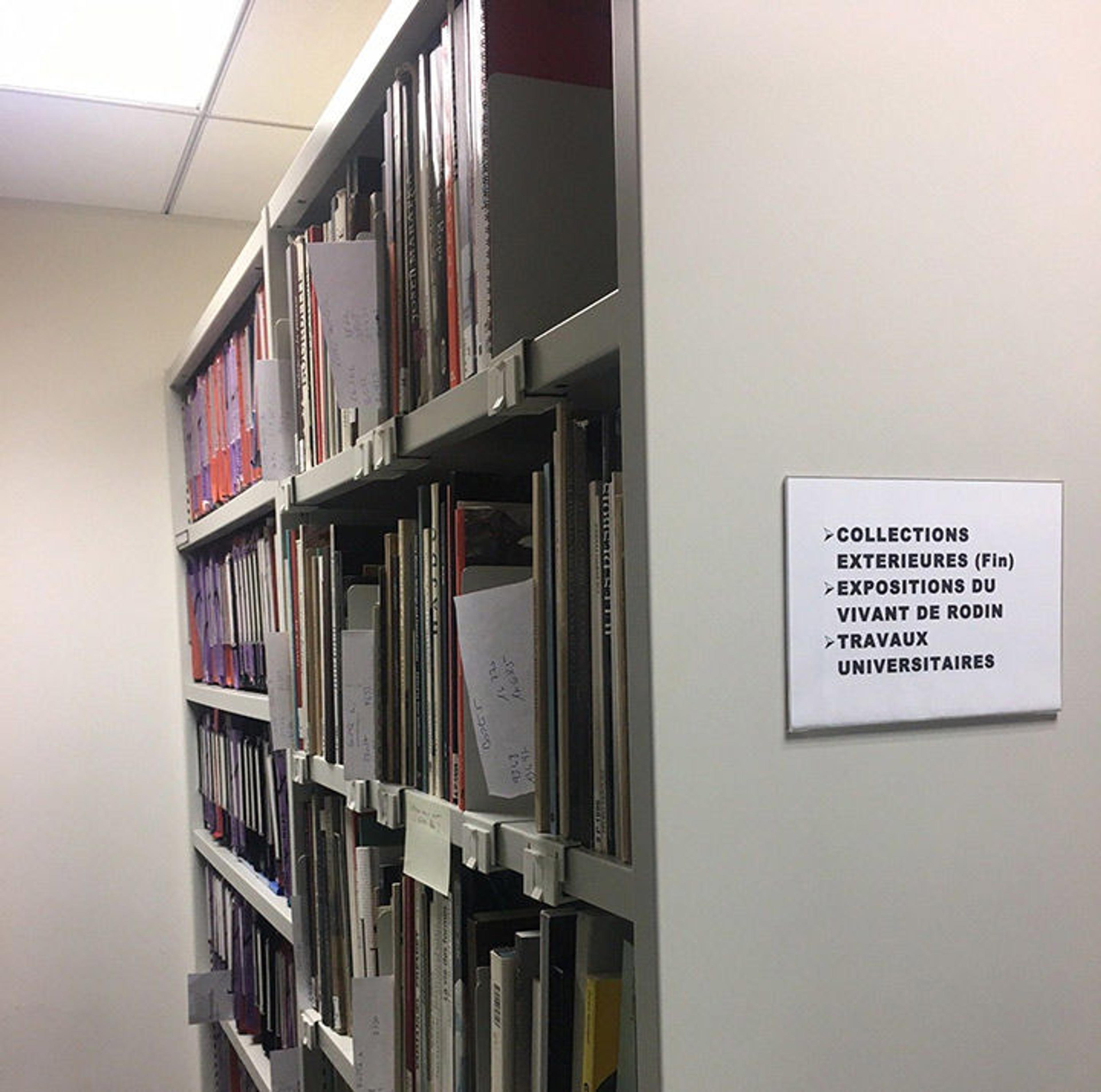
Archival collections at the Rodin Museum library
In the afternoon, the group visited the Bibliothèque du Musée Rodin. The library has a small staff—one librarian and one archivist, as well as assistants—and consists of just 25,000 volumes, including Auguste Rodin's personal library. Archival collections include some 60,000 documents—letters to and from Rodin, provenance documentation, periodicals, and other administrative and legal documents.
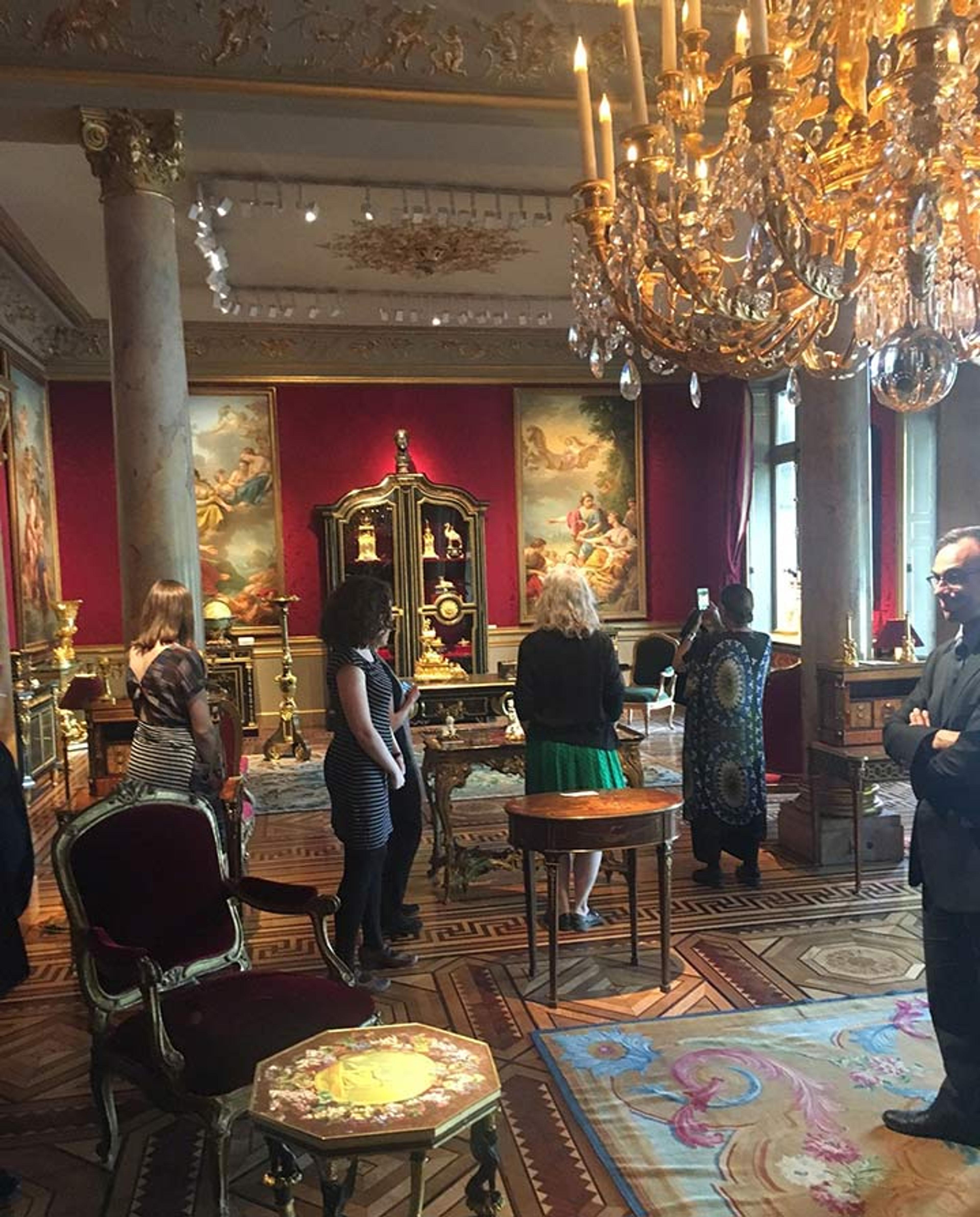
Display gallery to showcase objects for sale
The program ended with a visit to the Bibliothèque actuellement en travaux de la Galerie des marchands d'art Nicolas et Alexis Kugel.
Alexis Kugel, one of two brothers who took over this fifth-generation family business from his father in 1985, entertained our visit, along with his staff (three library staff, two buyers, and nine administrators or riggers). They only purchase (and sell) exquisite sculpture and decorative arts.
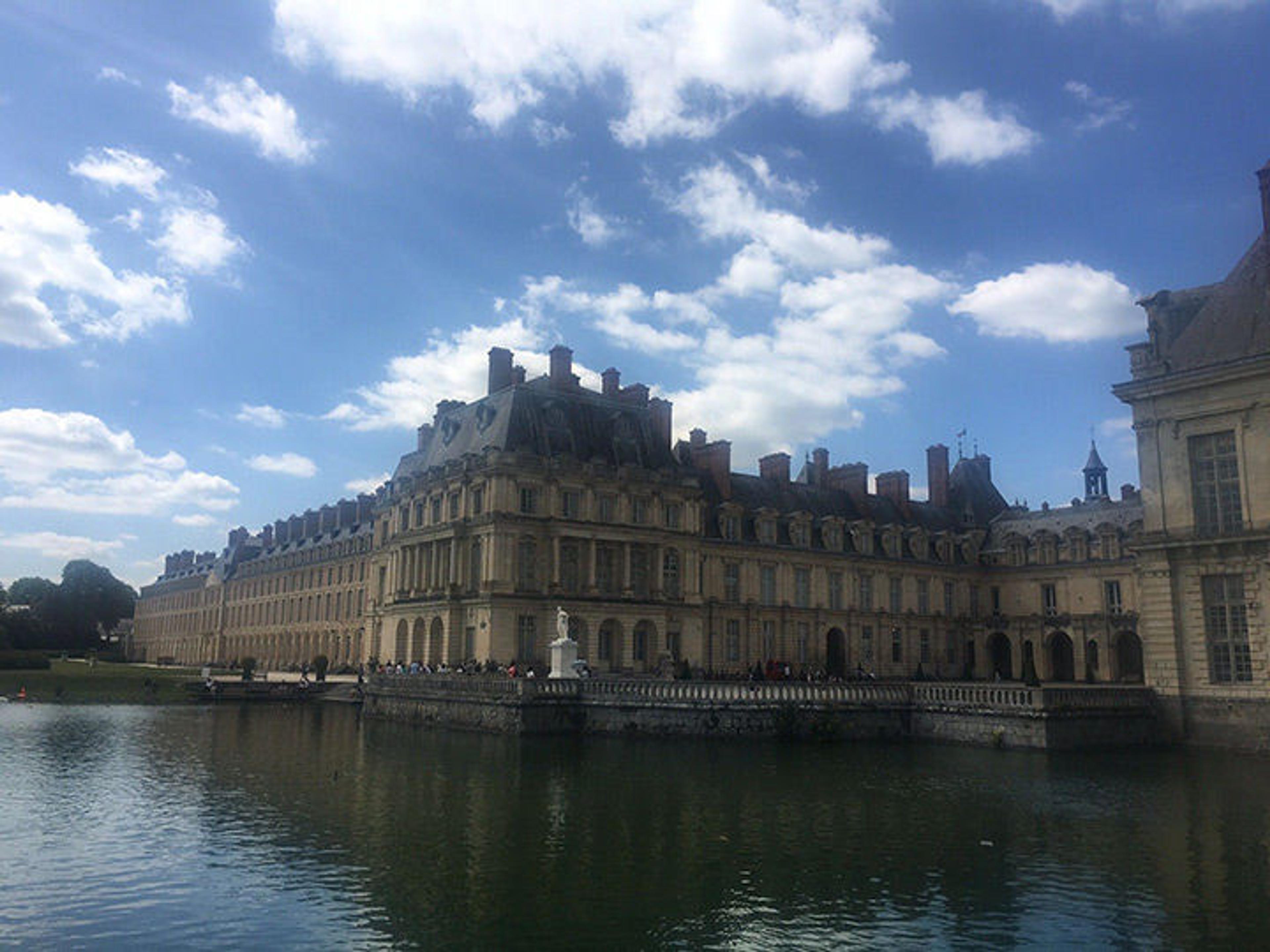
Fontainebleau from the garden side of the château
On Saturday, June 17, some participants in the study tour attended an optional visit to Fontainebleau château.
Travel costs associated with this study trip were generously funded by the Margaret and Herman Sokol professional travel grant supplied by The Metropolitan Museum of Art.
Editor's note: This post was updated on September 12 and 14, 2017. Corrections were submitted by Wilfred de Bruijn from the Fondation Custodia and Claire Seguret from the BnF.